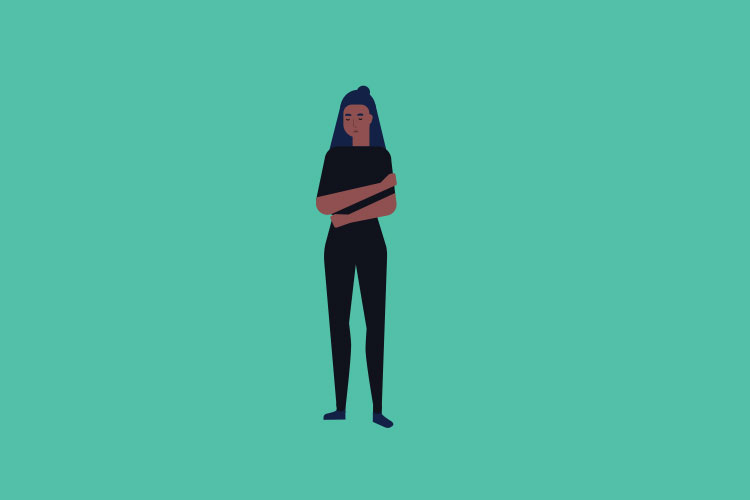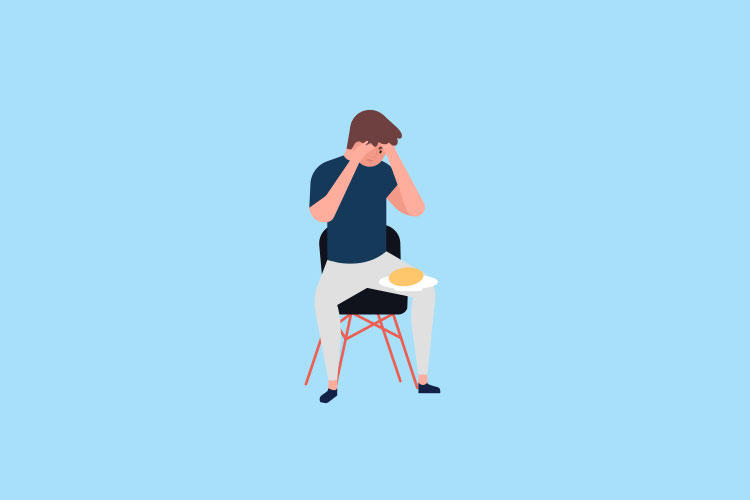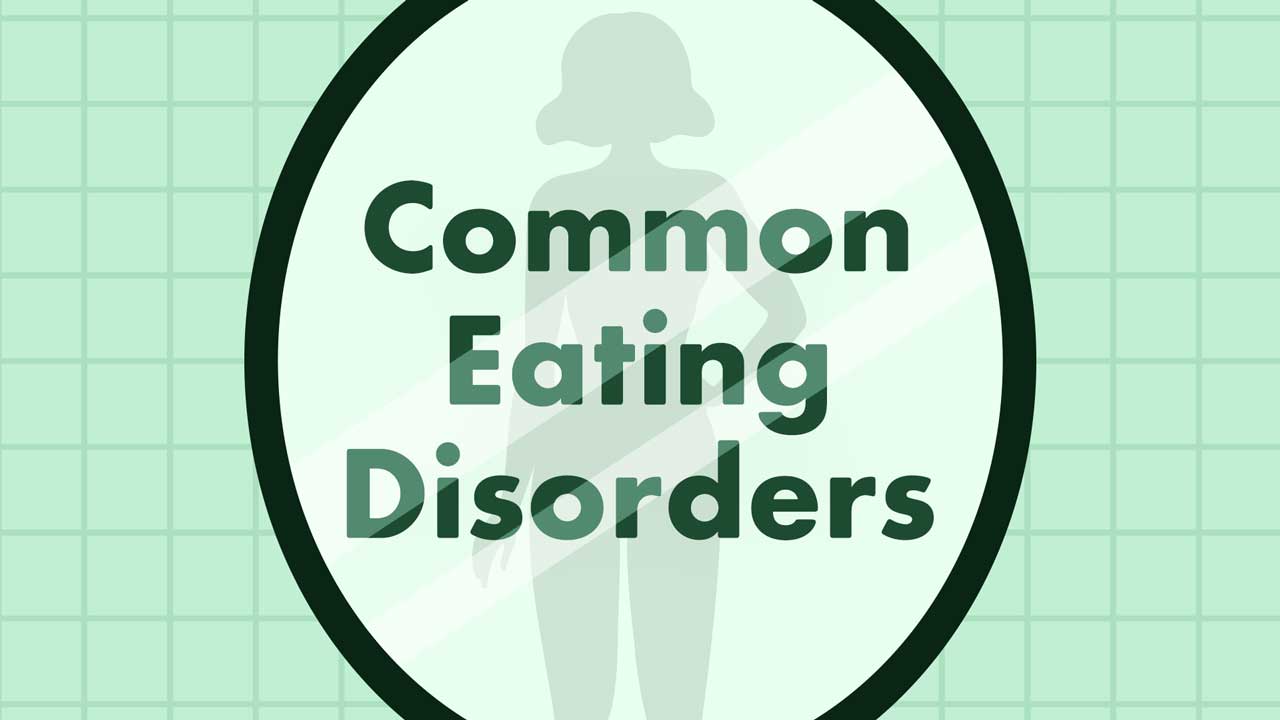Content warning: Please be aware that this article contains discussions relating to eating disorders and self-harm that some people may find distressing or triggering.
What is an Eating Disorder?
Eating disorders are complex mental illnesses, influenced by a range of factors. An eating disorder is an illness marked by irregular eating habits, distress about eating and an obsession with body weight (Rittenhouse 2024; Eating Disorders Victoria 2024a).
It’s commonly observed that eating disorders are a combination of biological, psychological, environmental and socio-cultural factors (Rittenhouse 2024).
Eating disorders create both considerable psychological impairments and stress, and wide-ranging medical complications (NEDC 2021).
Eating disorders are very serious, have severe health complications and can even be fatal (NIMH 2024).
While eating disorders are particularly common among young women, people of any age, gender, or economic or cultural background can develop an eating disorder (NEDC 2023).
The Prevalence of Eating Disorders in Australia
It’s estimated that 4.5% of Australians are currently living with an eating disorder (Butterfly 2024a).
Furthermore, almost one-third of Australian adolescents (31.6%) are estimated to engage in behaviours of disordered eating (that do not meet the criteria for an eating disorder) (NEDC 2021).
Anorexia nervosa has the highest mortality rate of any psychiatric illness (Edakubo & Fushimi 2020).
Types of Eating Disorders
The following are the most common eating disorders, recognised by the Diagnostic and Statistical Manual of Mental Disorders (DSM-5-TR):
Anorexia Nervosa

Anorexia nervosa is a disease characterised by having an obsessive fear of gaining weight, restricting food and water intake, and disturbance in self-perceived weight or body shape (Rittenhouse 2024).
Types of Anorexia Nervosa
There are two recognised subtypes of anorexia nervosa:
- Restricting type: Where a person severely restricts their food intake. This restriction can take several forms (e.g. obsessive and rigid eating rules, skipping meals, counting calories).
- Binge-eating/purging type: Where a person restricts their food intake but also engages in binge-eating or purging behaviours.
(Butterfly 2021a; Eating Disorders Victoria 2024b)
Signs of Anorexia Nervosa
- Severely restricting food intake
- Change in food preferences
- Emaciation (extreme thinness)
- Decreased performance at school or work
- Distorted body image
- Depression
- Anxiety
- Rigid ‘black and white’ thinking about foods (e.g. good or bad foods)
- Obsessive rituals around food
- Noticeable anxiety around mealtimes
- Repetitive and/or obsessive body-checking behaviours
- Making excuses not to eat or avoiding social situations involving food
- Mood swings
- Self-harm or suicide attempts
- Fear of being overweight even when severely underweight
- Lethargy.
(Rittenhouse 2024; Butterfly 2021a; NIMH 2024; Eating Disorders Victoria 2024b)
Potential Complications of Anorexia Nervosa
- Brain damage
- Multi-organ failure
- Loss of bone calcium
- Anaemia
- Depression
- Anxiety
- Lethargy
- Heart difficulties
- Fainting and/or dizziness
- Infertility
- Secretive eating and/or exercise behaviours
- Disturbance of menstrual periods
- Loss of libido
- Compromised immune system
- Intestinal problems and/or abdominal pain
(Rittenhouse 2024; Butterfly 2021a; Eating Disorders Victoria 2024b)
Bulimia Nervosa

Bulimia nervosa is an illness associated with binge eating followed by behaviours to compensate for overeating, such as forced vomiting, excessive exercise or using laxatives or diuretics (Butterfly 2021b).
Signs of Bulimia Nervosa
- Self-induced vomiting
- Frequent trips to the bathroom, particularly after eating
- Fluctuations in weight
- Mood swings
- Depression
- Anxiety
- Food avoidance and/or dieting behaviour
- Laxative misuse
- Self-harm or suicide attempts
- Fasting
- Excessive exercise
- Secretive eating and/or exercise behaviours
- Use of drugs, illicit, prescription and/or over the counter inappropriately for weight control
(Rittenhouse 2024; NEDC 2021; Butterfly 2021b; APA 2023)
Potential Complications of Bulimia Nervosa
- Chronic sore throat, indigestion, heartburn and reflux
- Inflammation/rupture of oesophagus
- Stomach/intestinal ulcers
- Stomach rupture
- Irregular or slowed heartbeat and cardiac arrest
- Loss of libido
- Depression
- Lethargy
- Anxiety
- Gum disease and/or tooth decay
- Bowel issues
- Severe dehydration
- Osteoporosis
- Disturbance of menstrual periods
- Increased risk of infertility in men and women.
(Butterfly 2021b; APA 2023; Eating Disorders Victoria 2024c)
Binge Eating Disorder

A person with binge eating disorder will eat large amounts of food in a short time frame. They may feel that their eating is out of control. People with binge eating disorder do not engage in compensatory behaviours after binge eating (Butterfly 2024b).
Signs of Binge Eating Disorder
- A preoccupation with eating, food, body shape and weight
- Low self-esteem
- Irritability
- Erratic behaviour
- Repeated episodes of binge eating
- An apparent loss of control when eating
- Eating rapidly
- Difficulty sleeping
- Increased isolation
- Feeling bloated, constipated and/or developing intolerances to food
- Anxiety
- Depression
- Self-harm or suicide attempts
- Expressing shame or guilt about eating
- Secretive eating behaviours
- Increased sensitivity to questions about food.
(SANE 2017; Butterfly 2024b; Eating Disorders Victoria 2022d)
Potential Complications of Binge Eating Disorder
- Osteoarthritis
- Obesity
- Cardiac arrest
- Anxiety
- Depression
- Lethargy
- Loss of libido
- Cardiovascular disease
- Hypertension
- Disturbance of menstrual periods
- Chronic kidney problems or kidney failure.
(Butterfly 2021c; Eating Disorders Victoria 2024d; APA 2023)
Avoidant Restrictive Food Intake Disorder (ARFID)

Avoidant restrictive food intake disorder (ARFID) is a newly defined eating disorder characterised by a disturbance in eating habits, which results in a persistent failure to meet nutritional needs (APA 2023; Eating Disorders Victoria 2024e).
This avoidant behaviour is not related to body image. Instead, people with ARFID may display disturbed eating patterns due to factors such as:
- Fear of eating-related consequences such as choking or food poisoning
- Phobia of certain foods or the act of eating
- Sensory sensitivity to certain textures, smells etc.
- Lack of interest in eating (e.g. forgetting to eat, not feeling hungry).
(Eating Disorders Victoria 2024e; APA 2023)
Signs of Avoidant Restrictive Food Intake Disorder
- Fear of eating and drinking-related consequences
- Being a ‘picky eater’ or seeming fearful of certain foods
- No signs of anxiety related to body image
- Avoiding situations where food may be served
- Becoming distressed if preferred foods are unavailable
- Anxiety about food and eating
- Sensory sensitivity
- Feeling prematurely full while eating
- Low appetite
- Lack of interest in food or eating
- Skipping meals or not eating enough
- Not engaging in weight control behaviours
- Forgetting to eat
- Requiring nutritional supplements
- Malnutrition.
(Eating Disorders Victoria 2024e; APA 2023)
Potential Complications of Avoidant Restrictive Food Intake Disorder
- Headaches
- Dry skin
- Brittle nails
- Hair loss and/or thinning
- Bruising easily
- Yellow complexion
- Thin white hair (lanugo) growing on the body
- Sensitivity to cold
- Poor circulation
- Hypotension
- Dehydration
- Kidney failure
- Muscle loss
- Loss of bone calcium
- Anaemia
- Depression
- Anxiety
- Lethargy
- Heart difficulties
- Fainting and/or dizziness
- Infertility
- Disturbance of menstrual periods
- Loss of libido
- Intestinal problems and/or abdominal pain.
(Eating Disorders Victoria 2024e)
Other Specified Feeding and Eating Disorder (OSFED)
People with this disorder may display characteristics of other eating disorders but do not meet the full criteria for diagnosis of one or more of these disorders (SANE 2017).
Eating Disorder Recovery
Recovering from an eating disorder can be a long and challenging process, but it is possible, even if the person has been living with the condition long-term (NEDC 2021).
Treatment options include:
- Psychotherapy
- Cognitive behaviour therapy
- Attending a clinic for eating disorders
- Seeing a dietitian and receiving nutritional counselling
- Medications (such as antidepressants).
(Butterfly 2022; APA 2023; Eating Disorders Victoria 2022f)
Test Your Knowledge
Question 1 of 3
A 30-year-old male reports frequent episodes of eating large amounts of food in a short time. After each binge, he feels a loss of control and extreme guilt but does not engage in compensatory behaviours such as vomiting or excessive exercise. He has gained weight over the last year and feels increasingly isolated. What is the most likely diagnosis?
Topics
Further your knowledge
 Free
Free



References
- American Psychiatric Association 2023, What Are Eating Disorders?, APA, viewed 16 September 2024, https://www.psychiatry.org/patients-families/eating-disorders/what-are-eating-disorders
- Butterfly Foundation 2021a, Anorexia Nervosa, Butterfly Foundation, viewed 16 September 2024, https://butterfly.org.au/eating-disorders/eating-disorders-explained/anorexia-nervosa/
- Butterfly Foundation 2024b, Binge Eating Disorder, The Butterfly Foundation, viewed 16 September 2024, https://butterfly.org.au/eating-disorders/eating-disorders-explained/binge-eating-disorder/
- Butterfly Foundation 2021b, Bulimia Nervosa, Butterfly Foundation, viewed 16 September 2024, https://butterfly.org.au/eating-disorders/eating-disorders-explained/bulimia-nervosa/.
- Butterfly Foundation 2022, Eating Disorders Treatment, Butterfly Foundation, viewed 16 September 2024, https://butterfly.org.au/eating-disorders/eating-disorders-treatment/
- Butterfly Foundation 2024a, ‘New Report Reveals Alarming Growth in Both Prevalence and Cost of Eating Disorders’, Butterfly Foundation News, 29 February, viewed 16 September 2024, https://butterfly.org.au/news/new-report-reveals-alarming-growth-in-both-prevalence-and-cost-of-eating-disorders/
- Eating Disorders Victoria 2024b, Anorexia Nervosa, Eating Disorders Victoria, viewed 16 September 2024, https://www.eatingdisorders.org.au/eating-disorders-a-z/anorexia-nervosa/
- Eating Disorders Victoria 2024e, ARFID, Eating Disorders Victoria, viewed 16 September 2024, https://www.eatingdisorders.org.au/eating-disorders-a-z/arfid/
- Eating Disorders Victoria 2024d, Binge Eating Disorder, Eating Disorders Victoria, viewed 16 September 2024, https://www.eatingdisorders.org.au/eating-disorders-a-z/binge-eating-disorder/
- Eating Disorders Victoria 2024c, Bulimia Nervosa, Eating Disorders Victoria, viewed 16 September 2024, https://www.eatingdiorders.org.au/eating-disorders-a-z/bulimia-nervosa/
- Eating Disorders Victoria 2024a, Eating Disorders Explained, Eating Disorders Victoria, viewed 16 September 2024, https://www.eatingdisorders.org.au/eating-disorders-a-z/eating-disorders-explained/
- Eating Disorders Victoria 2024f, Treatment Pathways for Adults, Eating Disorders Victoria, viewed 16 September 2024, https://www.eatingdisorders.org.au/my-eating-disorder-recovery-journey/eating-disorder-treatment-for-adults/
- Edakubo, S & Fushimi, K 2020, ‘Mortality and Risk Assessment for Anorexia Nervosa in Acute-care Hospitals: A Nationwide Administrative Database Analysis’, BMC Psychiatry, vol. 20, no. 19, viewed 16 September 2024, https://bmcpsychiatry.biomedcentral.com/articles/10.1186/s12888-020-2433-8
- National Eating Disorders Collaboration 2021, Eating Disorders in Australia, NEDC, viewed 16 September 2024, https://www.nedc.com.au/assets/Fact-Sheets/Eating-Disorders-in-Australia-ENG.pdf
- National Eating Disorders Collaboration 2023, What is an Eating Disorder?, NEDC, viewed 16 September 2024, https://nedc.com.au/eating-disorders/eating-disorders-explained/whats-an-eating-disorder
- National Institute of Mental Health 2024, Eating Disorders, U.S. Department of Health and Human Services, viewed 16 September 2024, https://www.nimh.nih.gov/health/topics/eating-disorders
- Rittenhouse, M 2024, What is an Eating Disorder: Types, Symptoms, Risks, and Causes, Eating Disorder Hope, viewed 16 September 2024, https://www.eatingdisorderhope.com/information/eating-disorder
- SANE 2017, Eating Disorders, SANE, viewed 16 September 2024, https://www.sane.org/information-and-resources/facts-and-guides/eating-disorders
 New
New 
